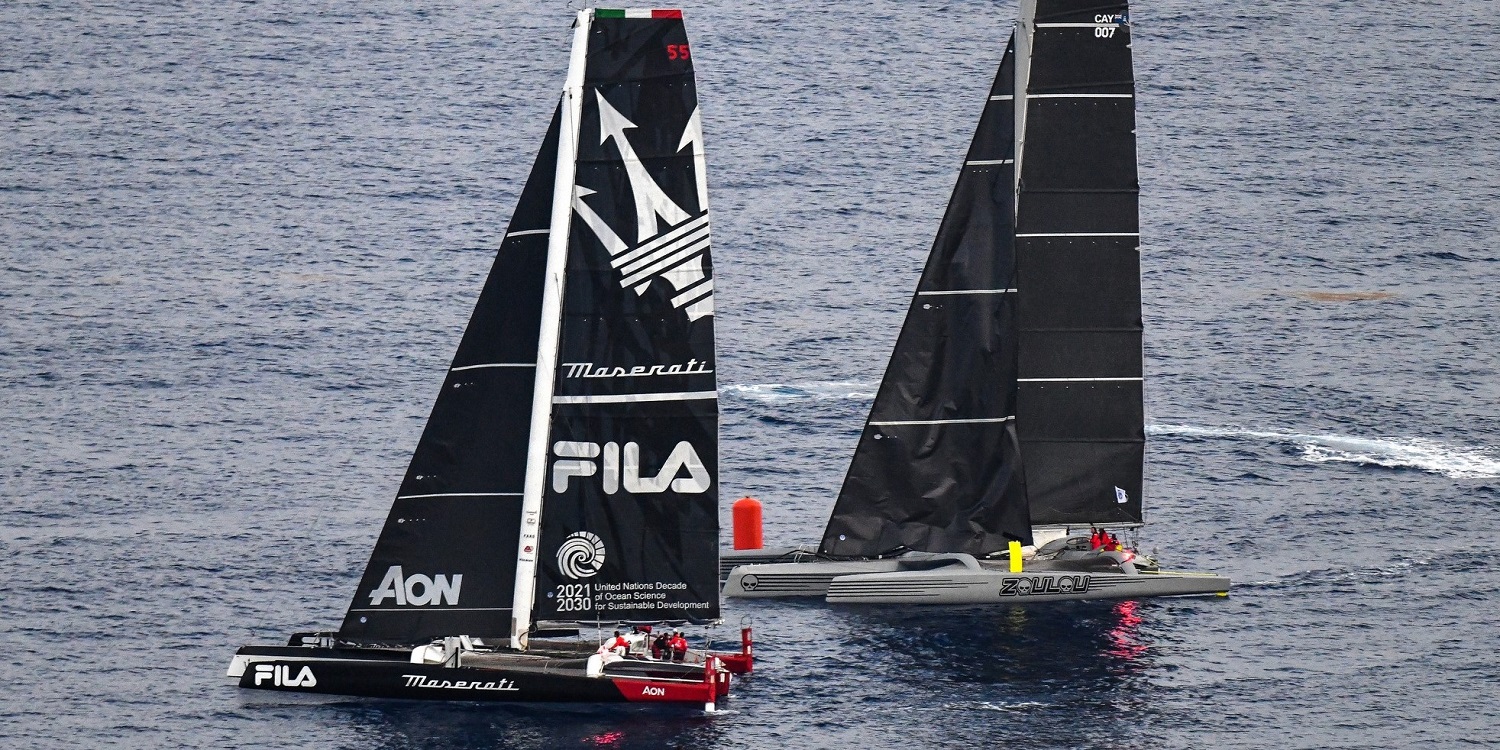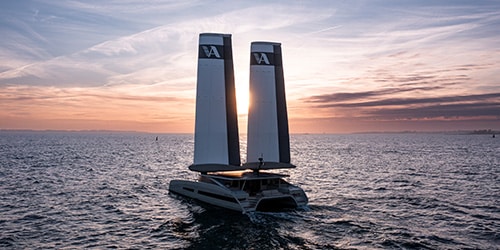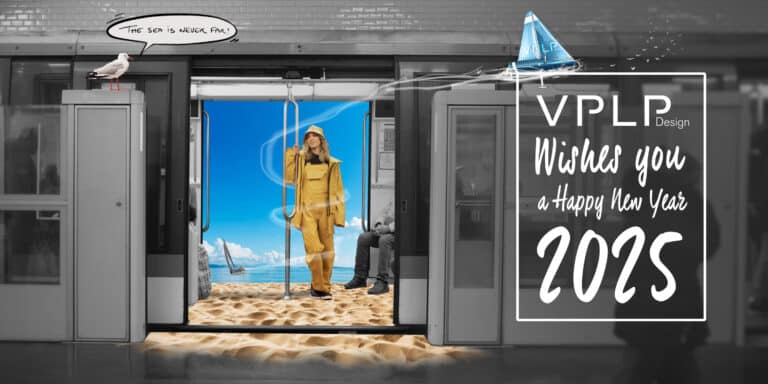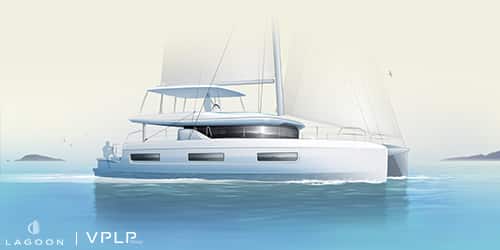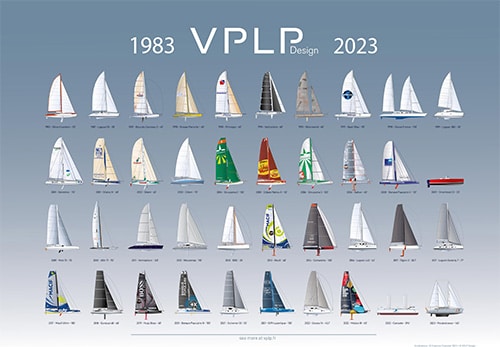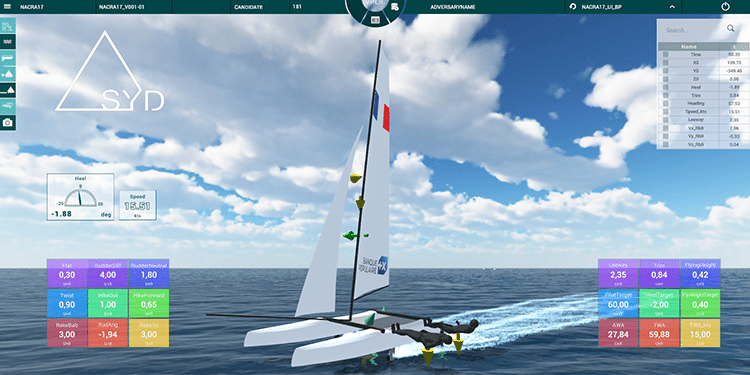Thirteen years after their launch, the MOD 70s continue to plough the seas and the number of dedicated racing events is increasing, much to the delight of their passionate and demanding owners. VPLP Design, the architect of these one designs, is collaborating with several vessels in the fleet to enhance their performance without betraying the philosophy of these sturdy and competitive multihulls. Vincent Lauriot Prévost and Quentin Lucet explain.
The distillation of four generations of ORMA trimarans (from Pierre 1er to Groupama 2), the MOD 70s were designed to be competitive for at least ten years at the pinnacle of racing. The first boats in the series went into the water in 2010. While the one-design circuit that accompanied their launch was abandoned after two years, a victim of circumstance, these trimarans built by CDK Technologies have never stopped sailing. Vincent Lauriot Prévost, cofounder of VPLP Design, says: “Apart from operating accidents, none of the boats ever had a problem with its structure. Back when we were designing them, we identified a dozen recurrent failures on the ORMAs and we took those lessons into account. The goal was to build multihulls that you could sail without any qualms or frequent refits.”
After 2013 the fleet scattered to the four corners of the globe, undertaking activities as varied as public relations and record-breaking, while some such as Gitana XV (now Maserati) became platforms for testing offshore multihull foiling.
Since 2020, six of the seven MOD 70s have been meeting in the Atlantic and the Mediterranean (only Orion, formerly Veolia Environnement, remains in San Francisco) to race various classics, such as the RORC Transatlantic Race, the RORC Caribbean 600 and the Middle Sea Race. “The atmosphere is fantastic because they are owners, not established teams, who are racing for fun, beholden to nobody, and with enough latitude to organize themselves as they wish. And they’re often backed up with big names, such as Loïck Peyron, Brian Thompson and Paul Larsen”, says Vincent Lauriot Prévost.
“We don’t want to risk deteriorating the vessel’s reliability”
And as if proof were needed that the series has retained its material coherence after all these years, the races often see tight finishes and a healthy rotation on the podium. “The most recent RORC Caribbean 600 culminated in an 11 second gap between Zoulou and Maserati”, says Quentin Lucet, partner naval architect. “The differences in development get washed out in the sailing conditions.”
Some of the owners want to update their vessels, such as Jason Caroll (Argo, formerly Musandam Oman Sail) and Erik Maris (Zoulou, formerly Paprec Recyclage), and have sought VPLP Design’s help. “Over the last ten years,” says Quentin Lucet, “we have made enormous progress in terms of foiling, notably through our work on the Ultim class and the IMOCAs. So we’ve been working on a new set of appendages for the MOD 70s, the idea being to converge on a common solution without betraying the original philosophy. The goal is indeed to sail flatter, faster and in greater safety, and certainly not about flying three feet over the waves. We’ve imposed on ourselves the limit of not reworking the structure because we don’t want to risk deteriorating the vessels’ reliability. The owners appreciate the problem-free aspect of the boats, even after all the nautical miles they have accumulated in their wake.” The crew behind Argo have commissioned new foils from Avel Robotics in Lorient (France) and T-foil rudders from C3 Technologies in La Rochelle (France).
That the MOD 70s were recognized in 2023 by the IMA (International Maxi Association), which is becoming more open-minded about multihulls, means these one-design trimarans could be about to extend their competitive reach. Entry to gruelling events, such as the Sydney Hobart, would be the icing on the cake. “It’s not at all unreasonable,” says Vincent Lauriot Prévost. “During the initial development of the MOD 70s, a race around the world via the canals was mooted, with a leg from Hawaii to Australia, which would have been three weeks of pretty stimulating sailing. We built them tough!”
